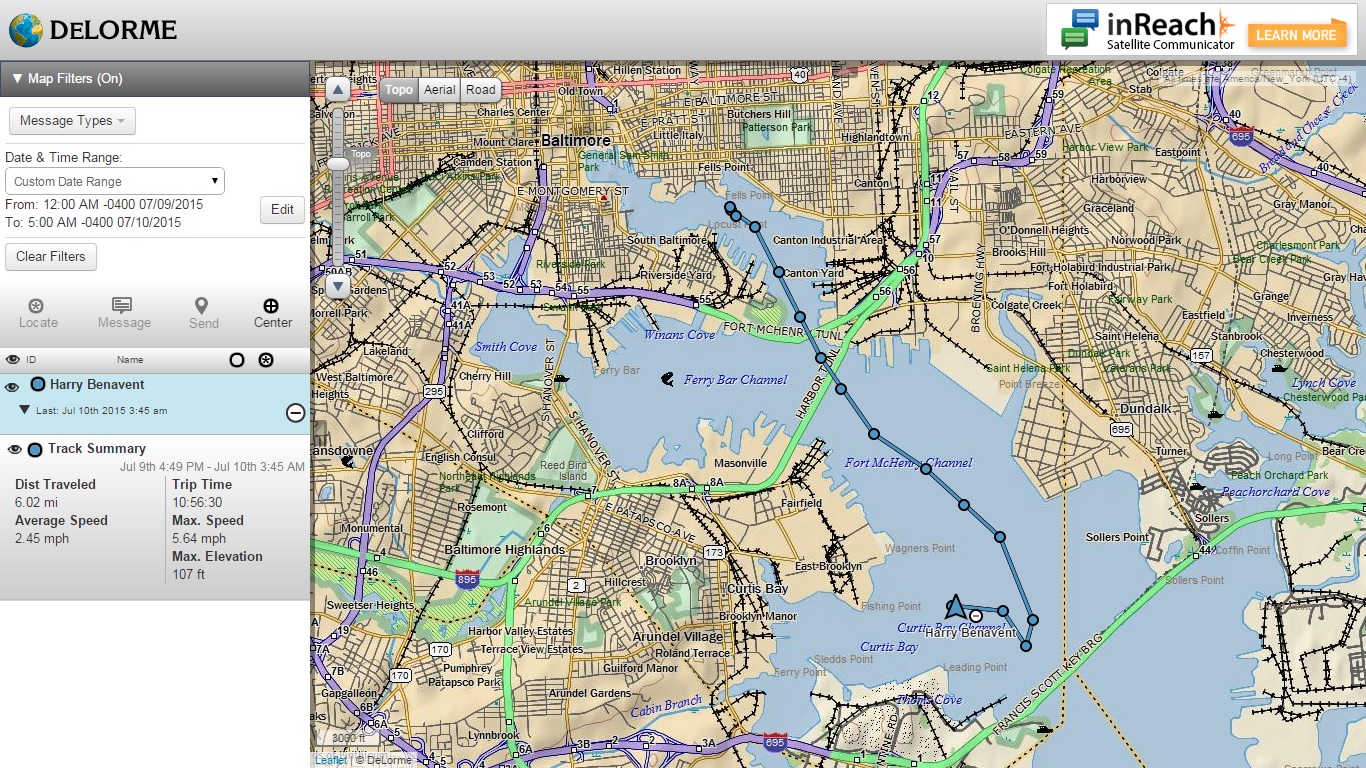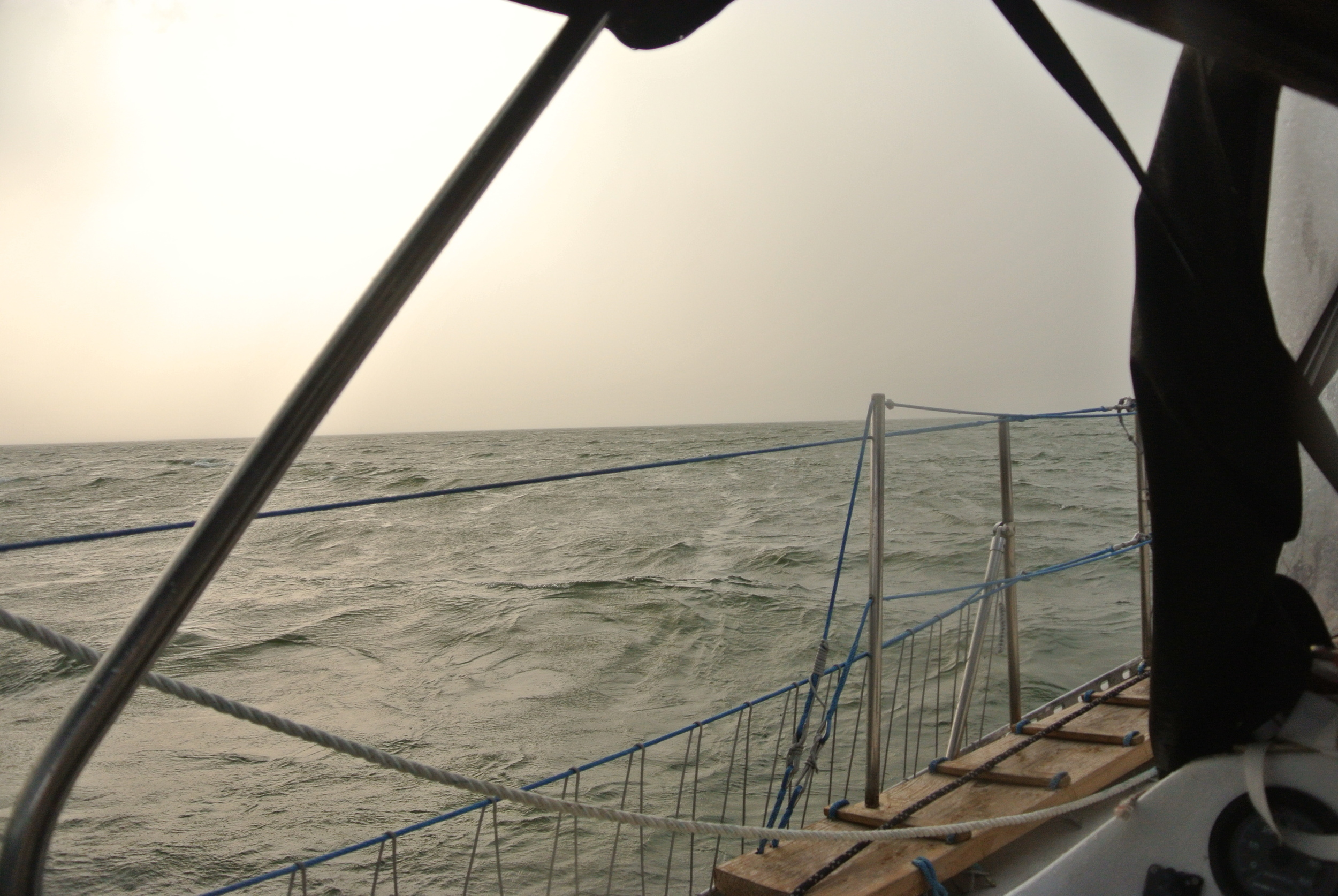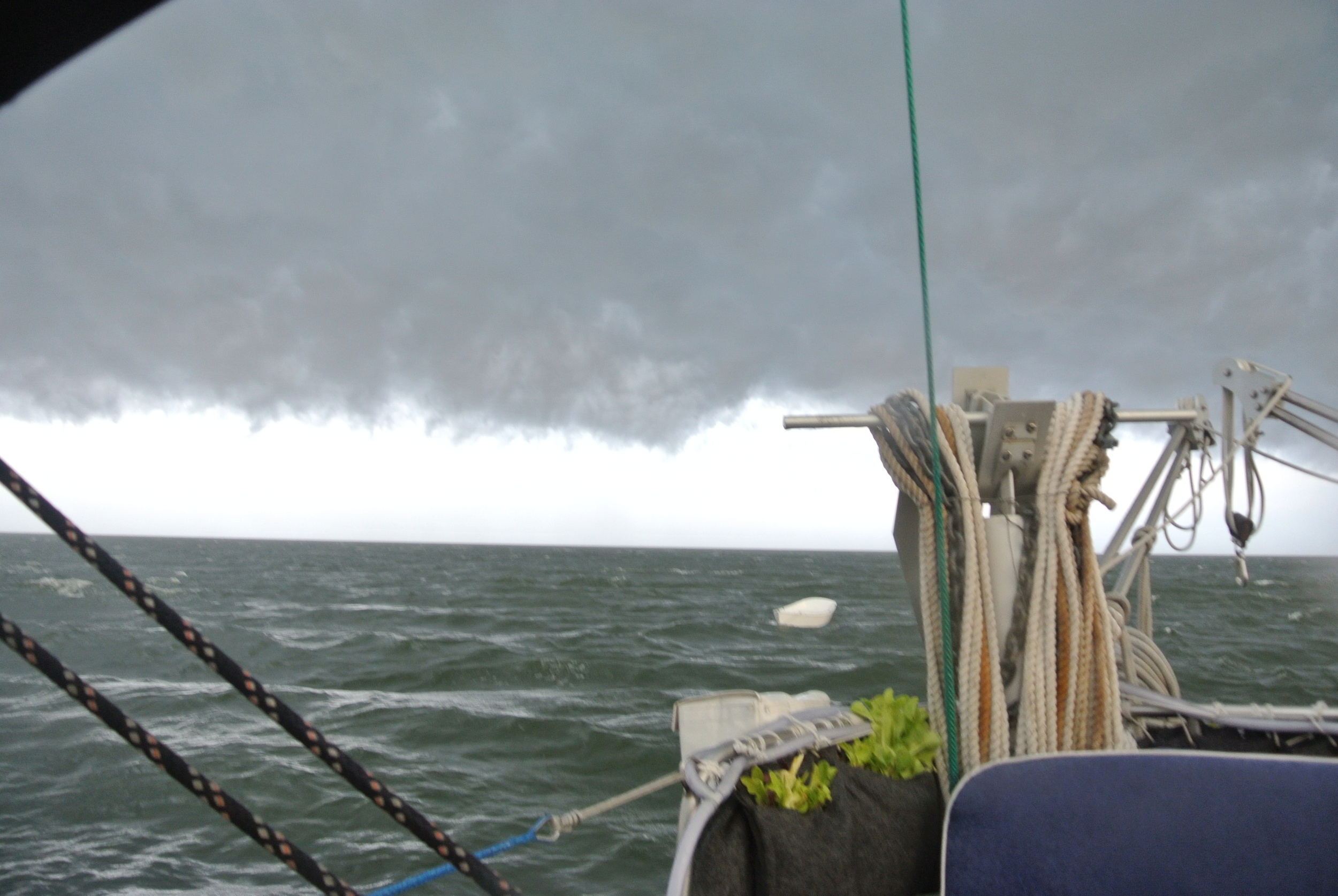We raised anchor in the early morning and made our way South towards South River where we were to meet up with my parents boat.
This was the only day when we had a destination with a time set on it. We were to meet with them for the afternoon and raft overnight for us to set sail the following morning.
We made good time during the morning, arriving at the mouth of South River by 2pm. That's when the wind died and we slowly made our way towards the river. We were there for so long that the tide actually changed and we were just barely able to keep our position under sail. We were slowly sailing forward in water that was pushing us backwards. Around 4pm, after 2 hours of sitting, we decided that we needed to motor up the river.
While under full sail and with a little push from the motor, we began moving along at 1 to 2 knots over ground. We finally arrived at our destination around 8pm, 6 hours after reaching the river! Maddie and I agreed that we would have simply anchored outside of the river rather than fighting our way in if we did not have a meeting time set up already.
We met up with with my dad at the mouth of Harness Creek and went in together.
The electric motor was able to power us up the river to this point, but it was too much motoring for the small battery bank, we burned the batteries down to 42% while struggling up South River against the tide.
It was all worth it though, we anchored and my dad rafted up to us for the night. My sister and her boyfriend made a delicious dinner for us to prepare for our big departure.
While we were rafted, I plugged Wisdom into my dads generator to recharge the batteries. Our new departure time was "As soon as the batteries are recharged!" This ended up being a long time since we were plugged into an outlet on my dads boat, only charging at 15 amps AC.
While rafted the next morning, we got had the perfect opportunity for a photo op.
Yes, we are a family of dentists!
My boat is Wisdom, because of the wisdom that I have acquired while living and working on her. The dinghy is Tooth, because then it turns the whole name into what I do for a living, pulling wisdom teeth. Eggstraction, my dads boat, is an Egg Harbor.
The question is, should we get another boat and name it Bloody, and put it all the way to the left?

















